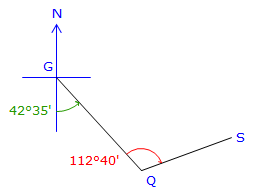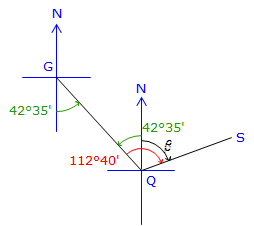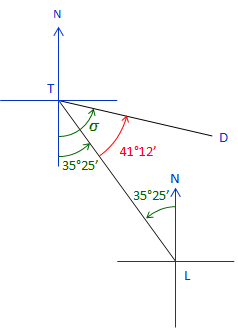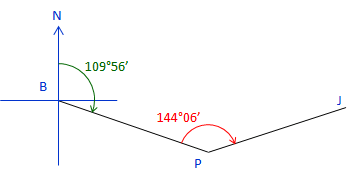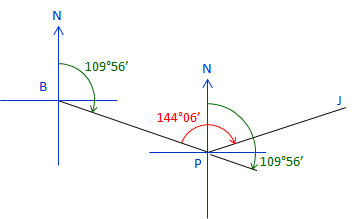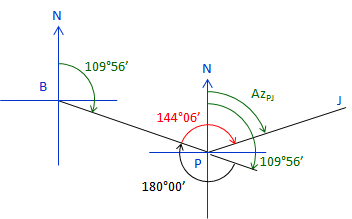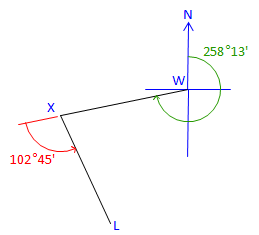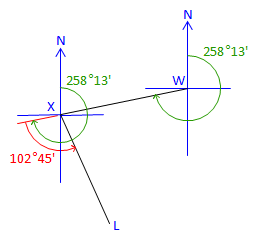2. Directions from Angles
a. Bearings
(1) Example 1
The bearing of line GQ is S 42°35' E. The angle right at Q from G to S is 112°40'. What is the bearing of the line QS?
Draw the sketch in parts starting with what is given.
|
|
Add the meridian at Q and label angles,
|
|
At Q, the bearing to G is N 42°35' W.
Subtracting 42°35' from 112°40' gives the angle, β, from North to the East for line QS.
Bearing QS = N 70°05" E
(2) Example 2
The bearing of line LT is N 35°25' W. The angle left at T from L to D is 41°12'. What is the bearing of the line TD?
Sketch:
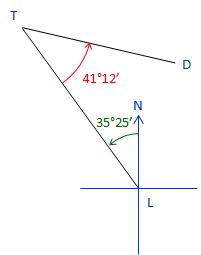 |
Add meridian at T and label angles
|
|
At T the bearing TL is S 35°25' E.
The bearing angle, σ, is 35°25' + 41°12' = 76°37'
Bearing TD = S 76°37' E.
b. Azimuths
(1) Example 1
The azimuth of line BP is 109°56'. The angle right at P from B to J is 144°06'. What is the azimuth of line PJ?
Sketch:
|
|
At P, add the meridian and extend the line BP
|
|
The azimuth of the extension is the same as the azimuth of line BP.
The azimuth of line PB: 109°56' + 180°00'= 289°56'.
Since 144°06' is to the right (+), add it to the azimuth of PB to compute azimuth of PJ: 144°06' + 289°56' = 434°02'
|
|
Why is the azimuth greater than 360°? Because we've gone past North.
To normalize the azimuth, subtract 360°00': 434°02' - 360°00' = 74°02'
(2) Example 2
The azimuth of line WX is 258°13'. At X the deflection angle from W to L is 102°45' L. What is the azimuth of line XL?
Sketch:
|
|
A deflection angle is measured from the extension of a line. The azimuth of the extension is the same as that of the line. To compute the next azimuth, the deflection angle is added directly to the previous azimuth.
Because this is a left deflection angle, you would add a negative angle.
Add meridian at X:
|
|
Azimuth XL = 258°13' + (-102°45') = 155°28'
